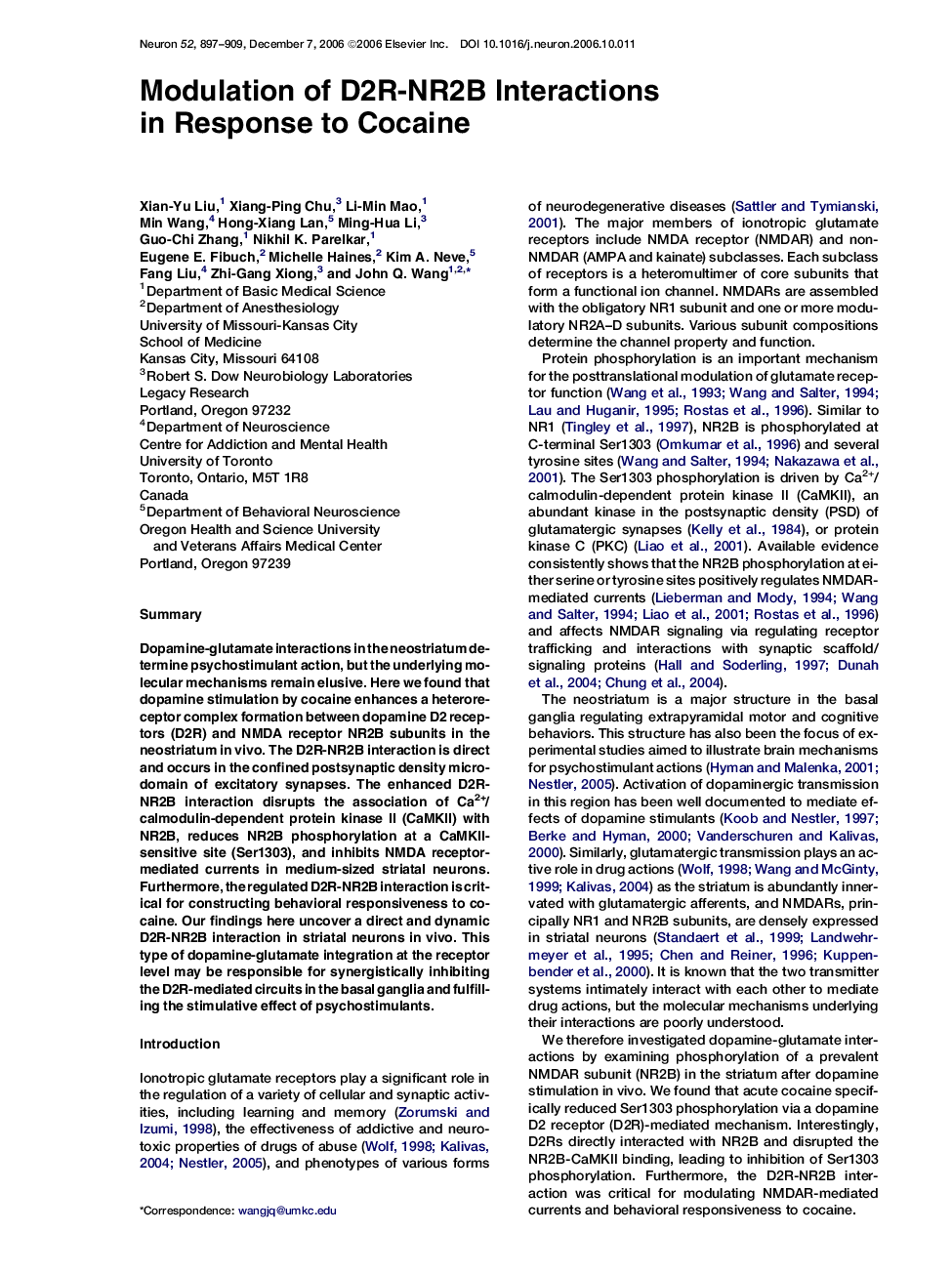| Article ID | Journal | Published Year | Pages | File Type |
|---|---|---|---|---|
| 4323260 | Neuron | 2006 | 13 Pages |
SummaryDopamine-glutamate interactions in the neostriatum determine psychostimulant action, but the underlying molecular mechanisms remain elusive. Here we found that dopamine stimulation by cocaine enhances a heteroreceptor complex formation between dopamine D2 receptors (D2R) and NMDA receptor NR2B subunits in the neostriatum in vivo. The D2R-NR2B interaction is direct and occurs in the confined postsynaptic density microdomain of excitatory synapses. The enhanced D2R-NR2B interaction disrupts the association of Ca2+/calmodulin-dependent protein kinase II (CaMKII) with NR2B, reduces NR2B phosphorylation at a CaMKII-sensitive site (Ser1303), and inhibits NMDA receptor-mediated currents in medium-sized striatal neurons. Furthermore, the regulated D2R-NR2B interaction is critical for constructing behavioral responsiveness to cocaine. Our findings here uncover a direct and dynamic D2R-NR2B interaction in striatal neurons in vivo. This type of dopamine-glutamate integration at the receptor level may be responsible for synergistically inhibiting the D2R-mediated circuits in the basal ganglia and fulfilling the stimulative effect of psychostimulants.
